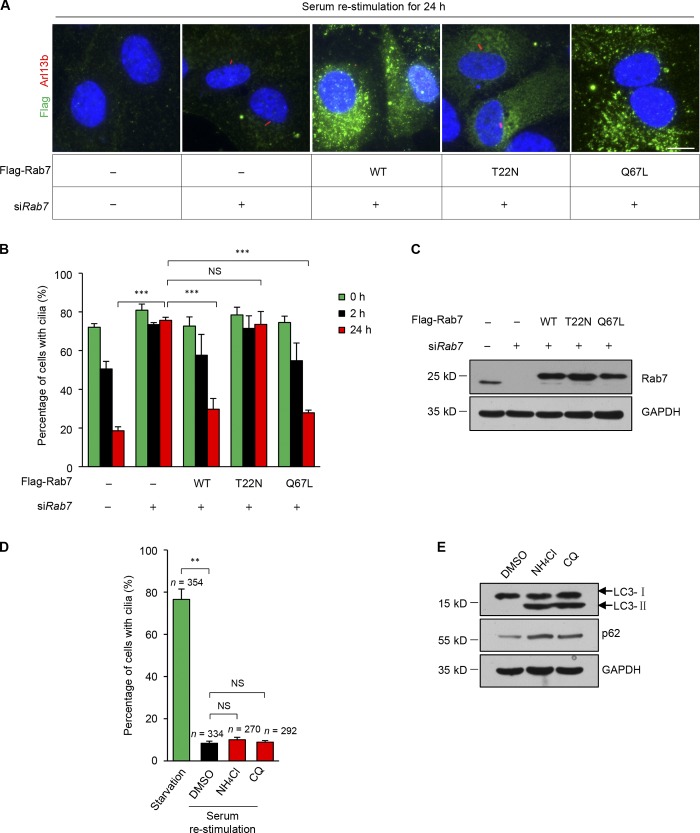Figure 3.
The activity of Rab7 is required for the disassembly of primary cilia. (A) Quiescent RPE-1 cells transfected with the indicated siRNAs and plasmids were subjected to serum restimulation for 24 h. Cells were stained with Flag (green) and Arl13b (red). Nuclei were stained with Hoechst (blue). WT, wild-type Rab7; T22N, dominant negative mutant of Rab7; Q67L, dominant active mutant of Rab7. All constructs were RNAi resistant. Scale bar, 10 µm. (B) Cells were collected at the indicated times after serum restimulation, and the percentages of transfected cells with cilia were quantified. Cilia disassembly defects induced by Rab7 knockdown in RPE-1 cells were rescued by Flag-Rab7-WT and the Q67L mutant, but not by the T22N mutant. Data are means ± SD of three independent experiments. ***P < 0.001. From left to right, cell n = 365, 295, 264; 270, 245, 242; 169, 147, 129; 137, 132, 122; and 153, 155, 162. (C) Immunoblots of RPE-1 cell lysates in B with the indicated antibodies. GAPDH was used as a loading control. (D) Quiescent RPE-1 cells were treated with DMSO, 10 mM NH4Cl, or 20 µM CQ in serum-containing media for cilia disassembly. The percentages of cells with primary cilia were quantified after the serum was restimulated for 24 h. Data are means ± SD of three independent experiments. Student’s t test was performed. **P < 0.01. (E) Western blotting was used to detect the inhibition effect of NH4Cl and CQ on lysosome. The accumulation of p62 and LC3-II indicates the inhibition of lysosome activity.

